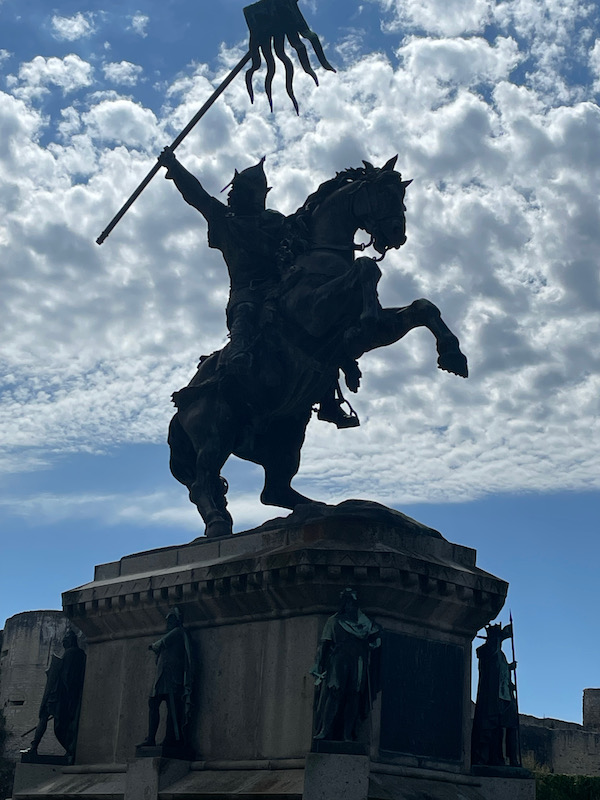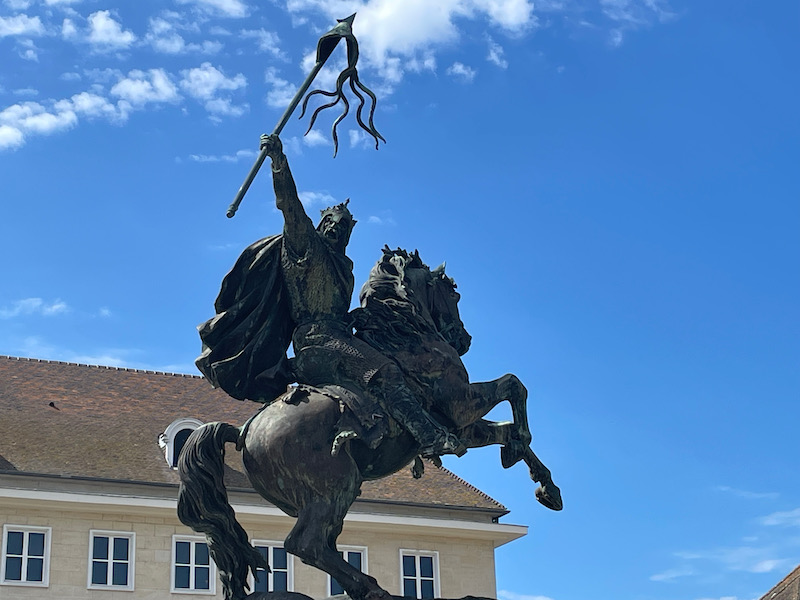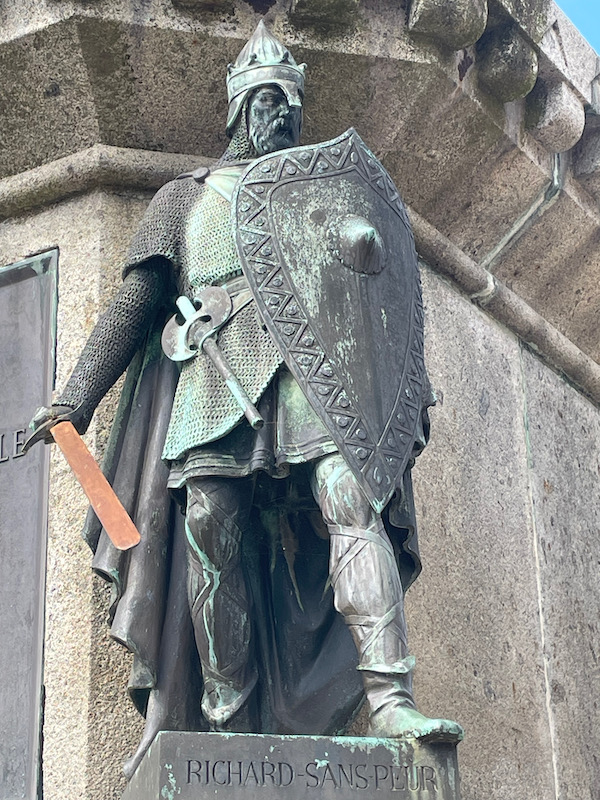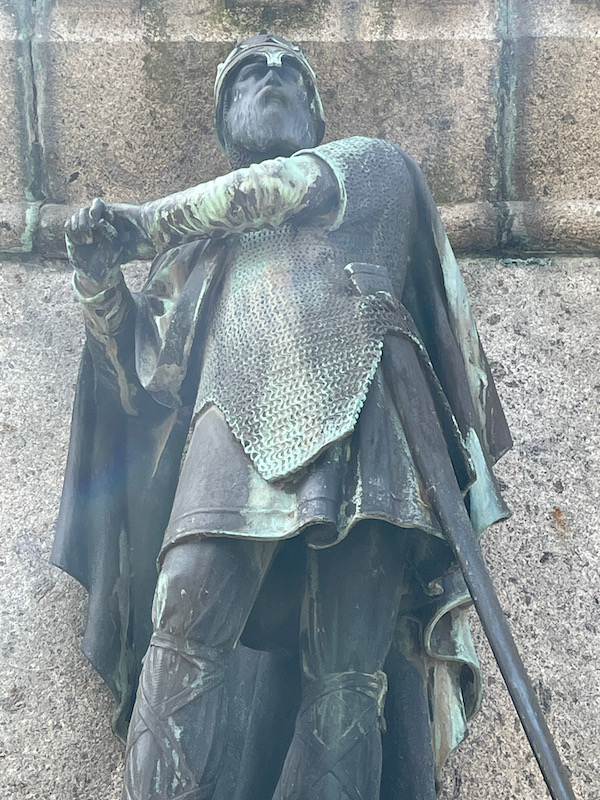Our Blog - Normandy 2023 - Falaise, France
The Chateau of William the Conquerer is in the town of Falaise, but I think calling it his chateau is a little misleading :-) In the 10th century, a Scandinavian Viking leader named Rollo pledged allegiance to King Charles III of West Francia (most of present-day France). This intermingling between Norse Viking settlers and local Franks started the "Normans". The Duchy of Normandy, and their Dukes of Normandy, independently controlled their lands while at the same time, being faithful to the King of France. A town and castle was built in Falaise, making it one of the first Norman cities. William was born here in 1027, the son of Duke Robert I of Normandy and a woman named Herleva, who was the daughter of a tanner in the town. She went on to marry someone else (never marrying William's father) and 2 other sons (Odo and Robert) who supported William during his reign. And while he grew up here in the town and castle enclosure, he didn't really do much with it as an adult.
So, back to William. His father decided to go on a pilgrimage to Jerusalem and, before he left, he made all of the noblemen swear allegiance to William (hmm.... did he have a premonition?) .... which was helpful since he died on his way back to Normandy from Jerusalem that same year. There were a few problems with William becoming the Duke. First, he was an illegitimate child (they referred to him initially as William the Bastard), and he was only 8 years old at the time of his fathers death. But with the support of King Henry I of France, he took over at Duke of Normandy in 1035. In 1050, he married Matilda of Flanders, his 5th cousin and daughter of the Count of Flanders. This gave him more power, as he then had the support of Flanders when trouble came his way (which of course, in those days, it always did). Mind you ... the Pope didn't give his blessing to the marriage (5th cousins were too close, you could only marry your 7th cousin at that time). But with a bit of compromise, the Papal blessing was gained in 1059.
Once he became an adult, he pretty much left the town and didn't really return. Most of what is seen today dates from the time of Henri I Beauclerc, the youngest son of William and Matilda. A large cylindrical defense tower is built in 1207, as well as semi-circular towers along the fortification walls. Little-by-little, the castle and buildings are changed and modified until the roofs and floors start caving in and the keeps are abandoned.
I'll start with the outer fortifications, walking around the outside, and then entering through the Saint Nicholas gate.
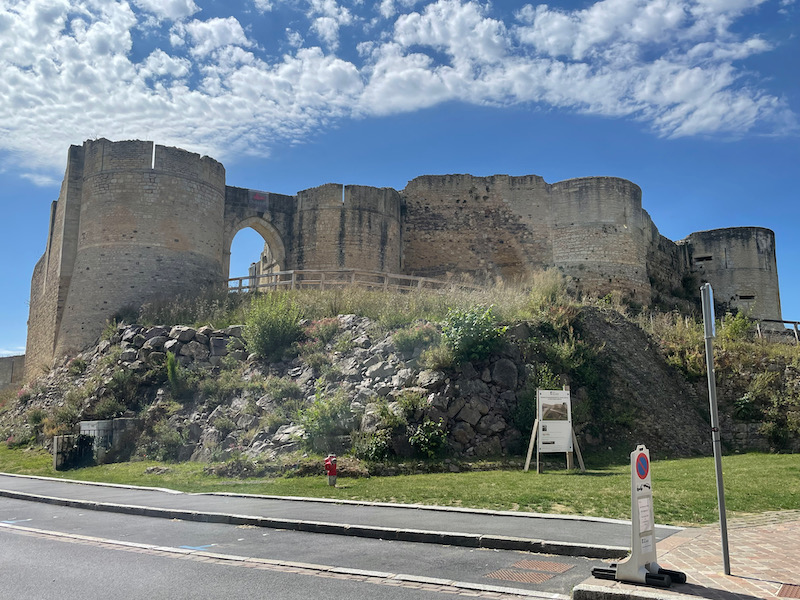
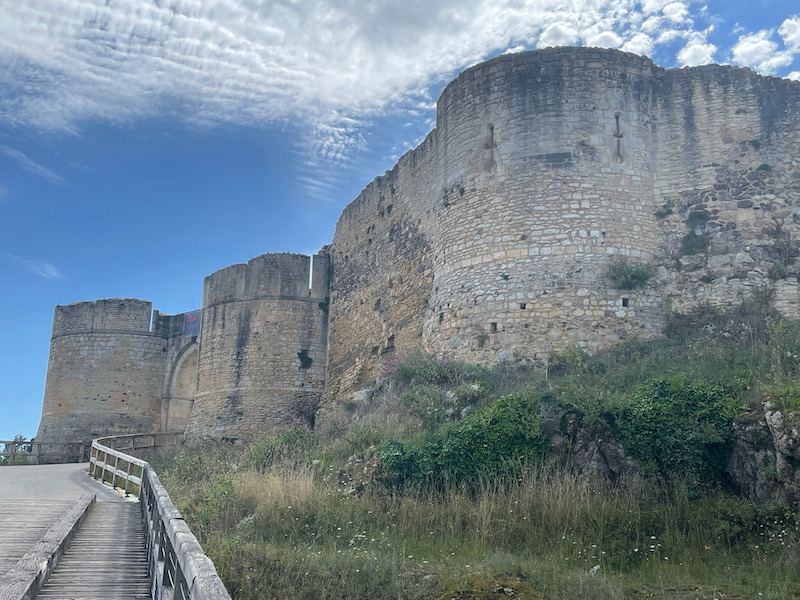
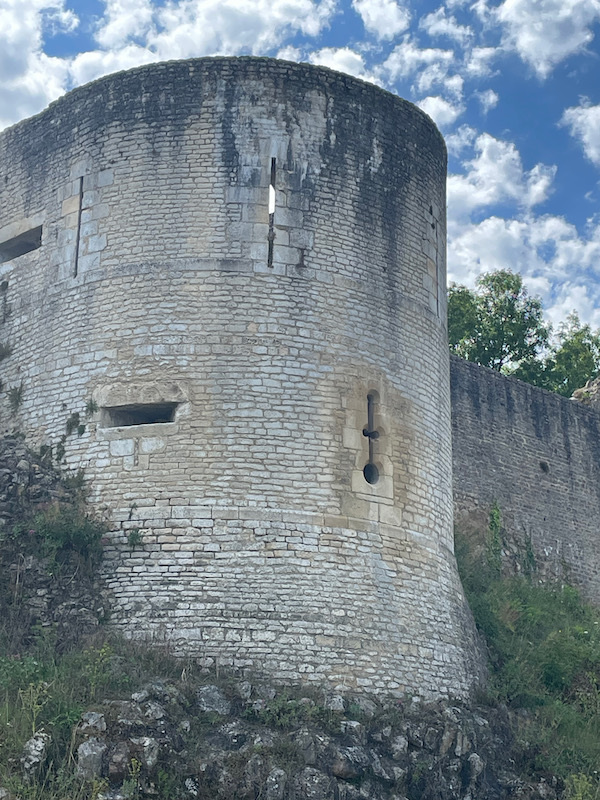
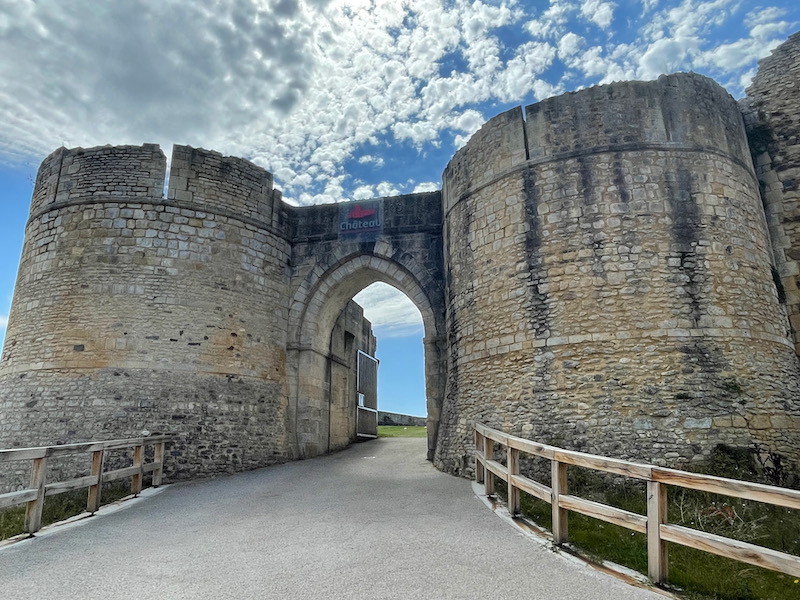
You can see here the round defensive tower and then a restored square keep. I'm not sure exactly what they are doing on the front of it ... almost looks like they are attempting to put an elevator in. The construction of the keep dates back to the second half of the 12th century, most likely from the reign of Henri II Plantagenet and his wife, Eleanor of Aquitaine. As you walked through, they had lots of information and videos playing against the walls that talked about the people associated with the château and their life here.
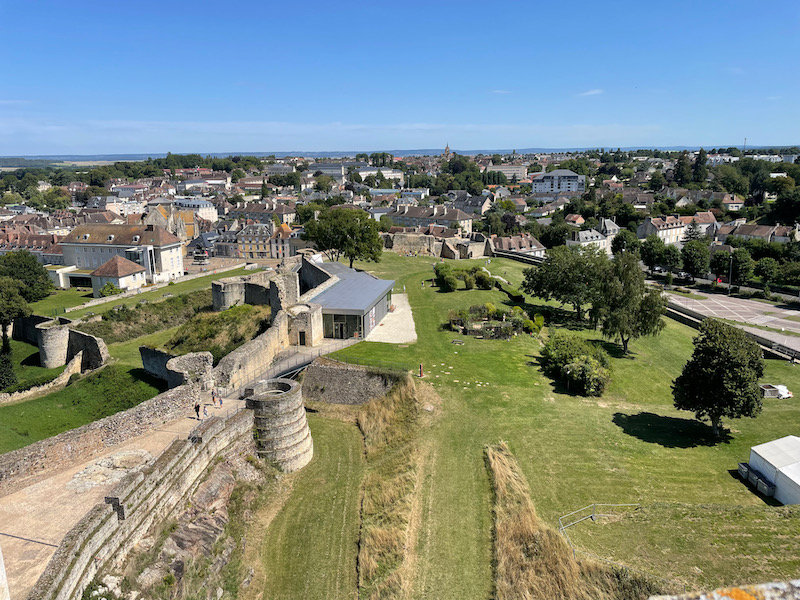
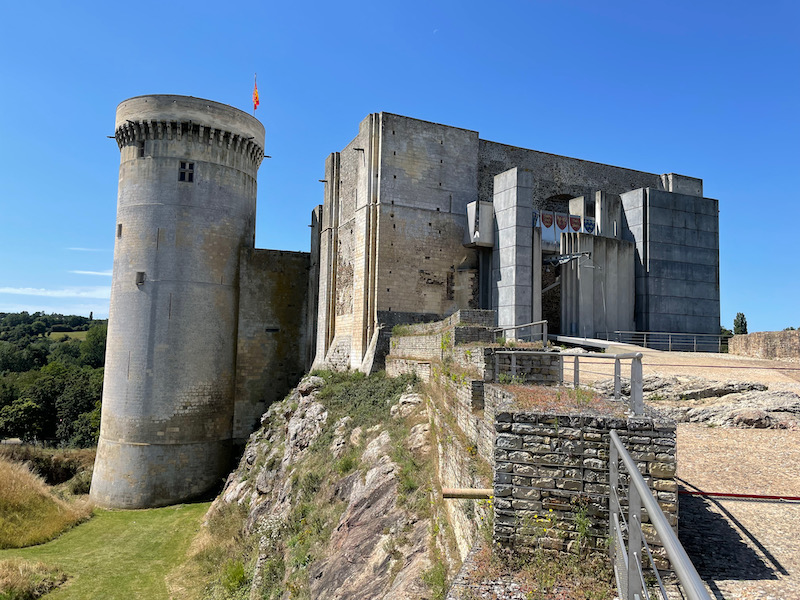
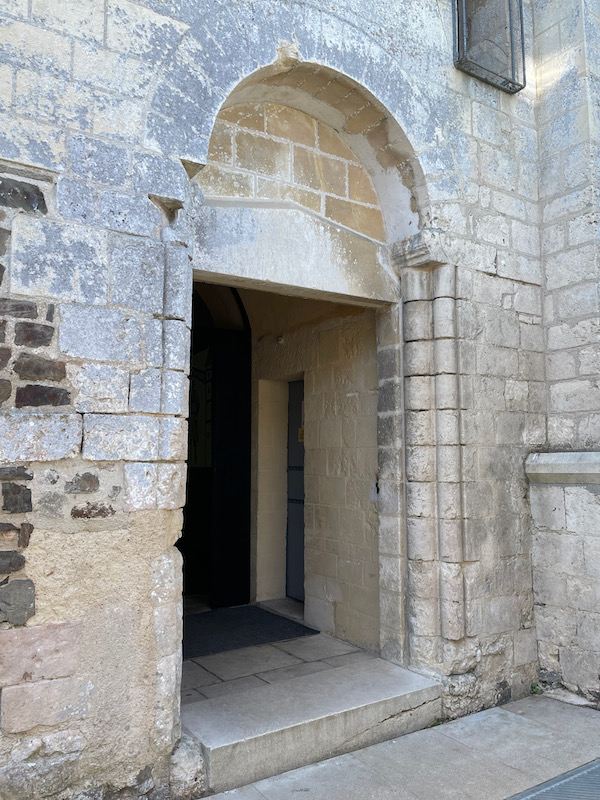
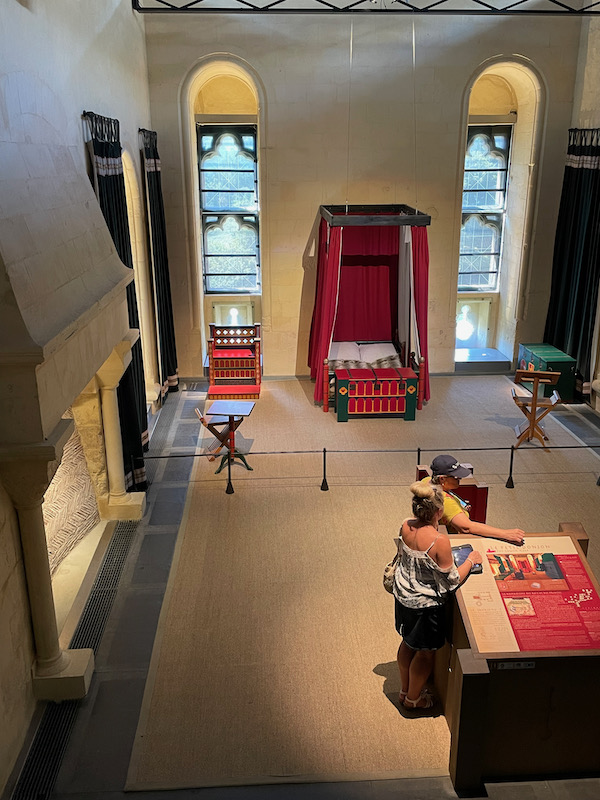
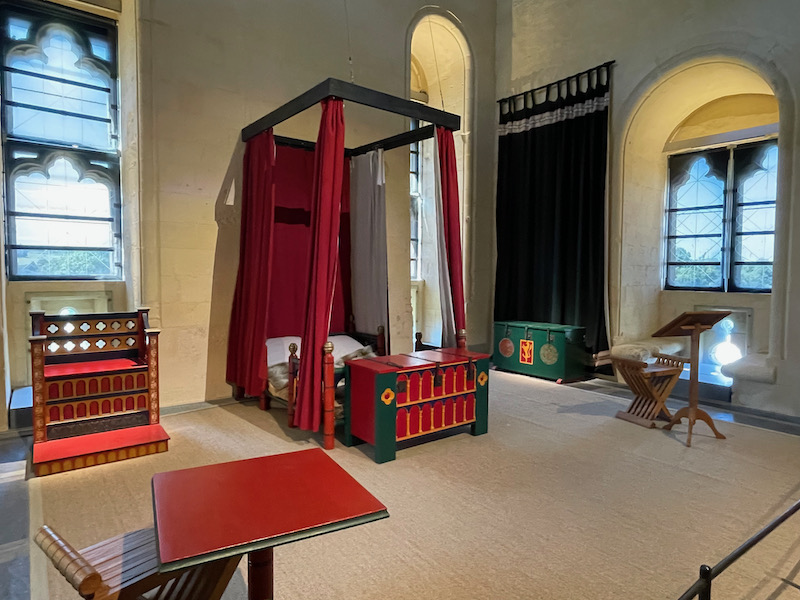
Then we wound our way up several stories in the round tower, with "personalities" telling their stories in the videos. Most of the rooms here were not very interesting.
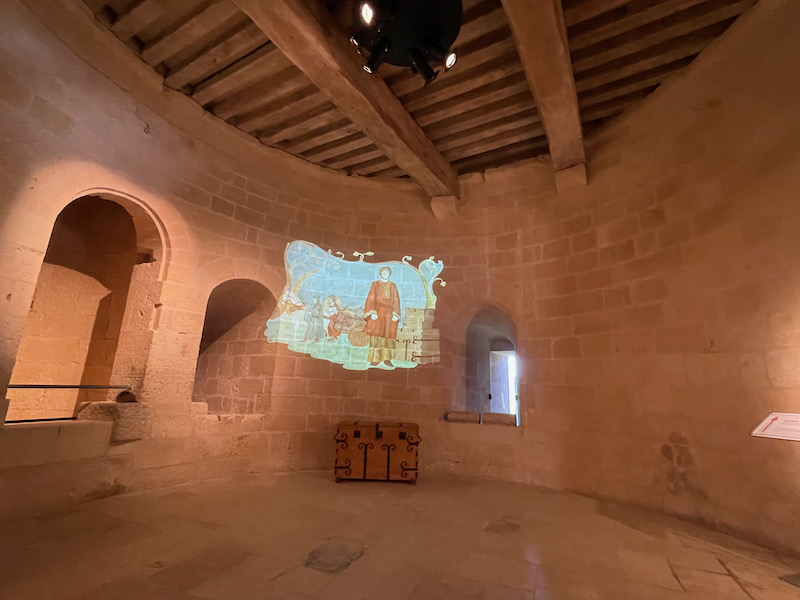
We then walked from the round tower that we had been in into the square keep, and grabbed a few pictures of the top of the round tower with the defensive machicolations as well as some pictures of the grounds. In this first picture, you can see a bit of what would be the outer walls and then the walkway lower-left which would go from the fortified town up to the castle.
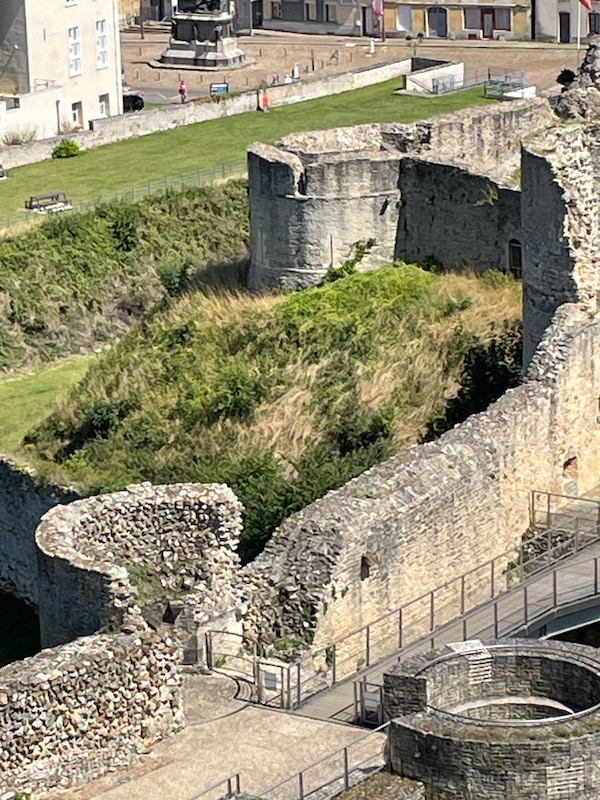
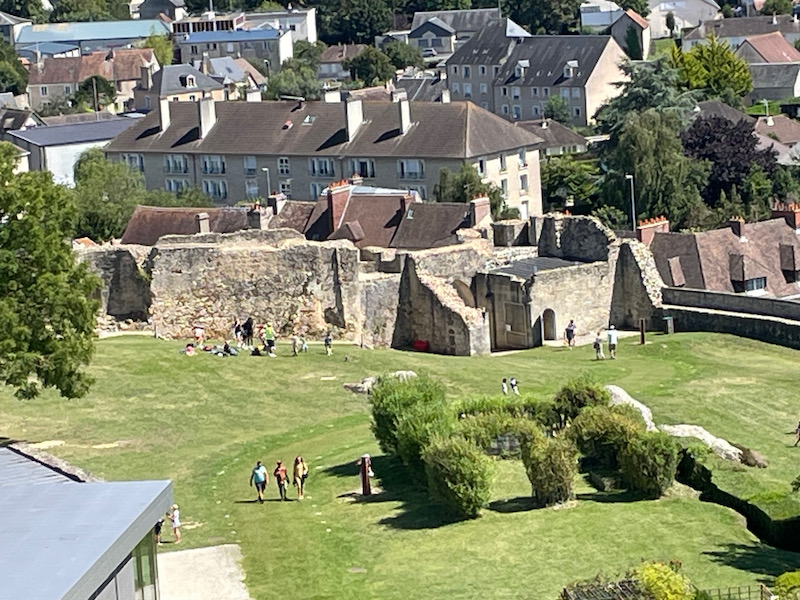
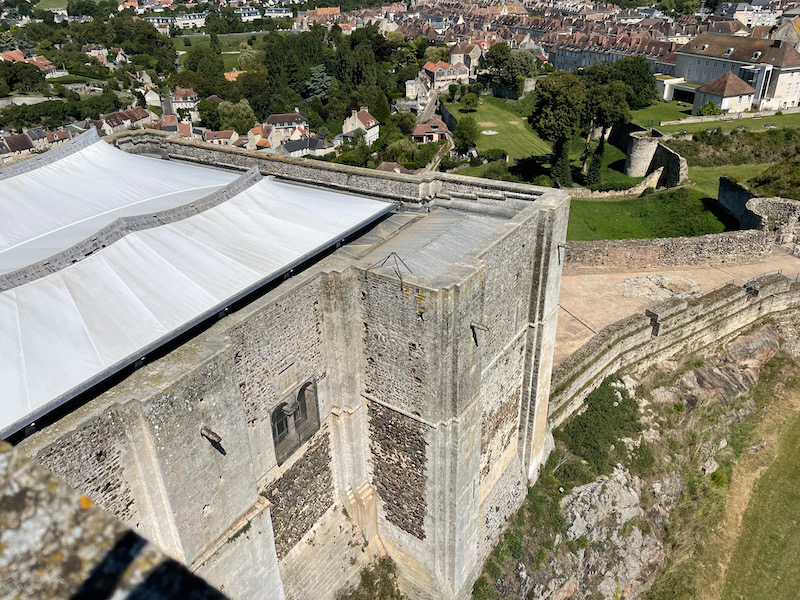
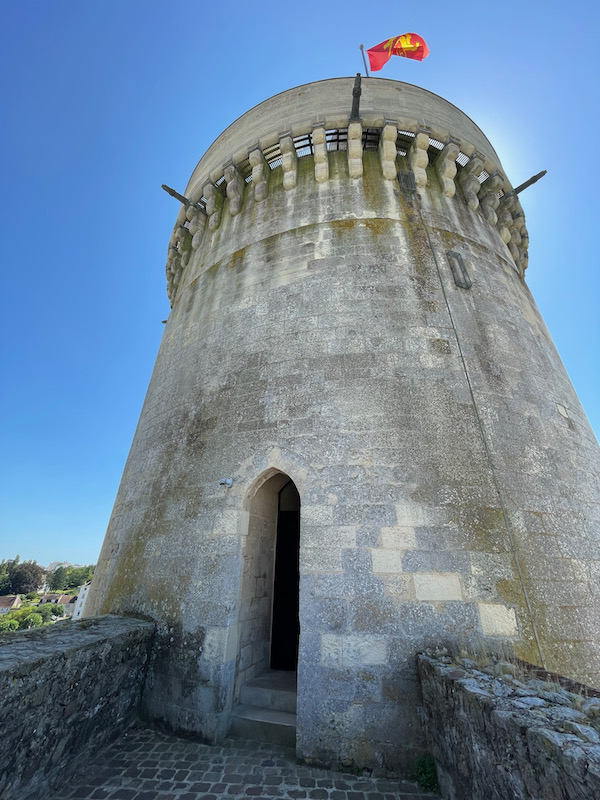
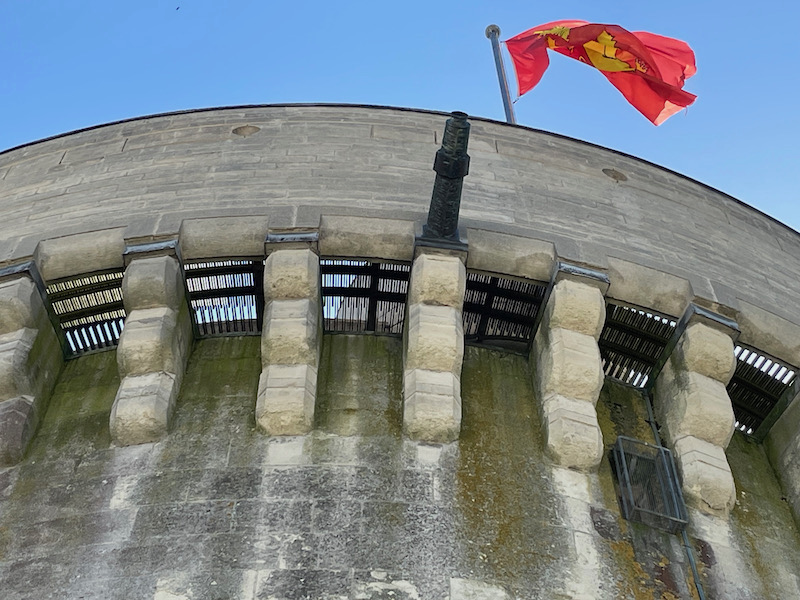
And a last picture of the keep and tower together.
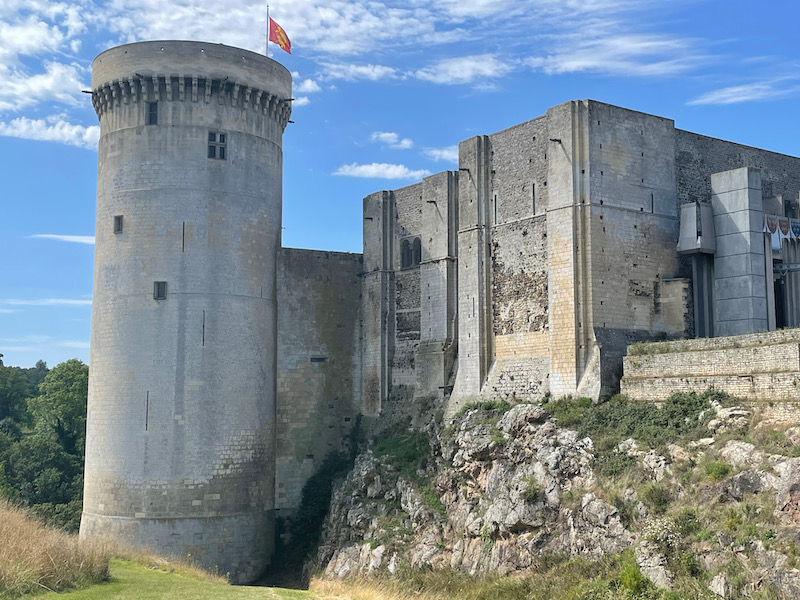
Just outside of the castle is the Trinity Church. The first church built here was in the 9th century, which was replaced with a Romanesque church in the 12th century. That one was destroyed in 1204 and rebuilt in 1240 in Gothic style.
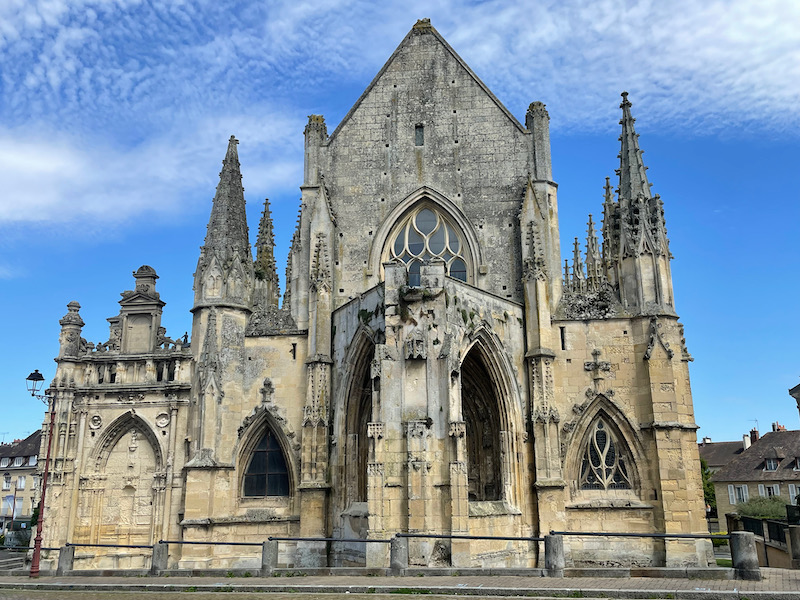
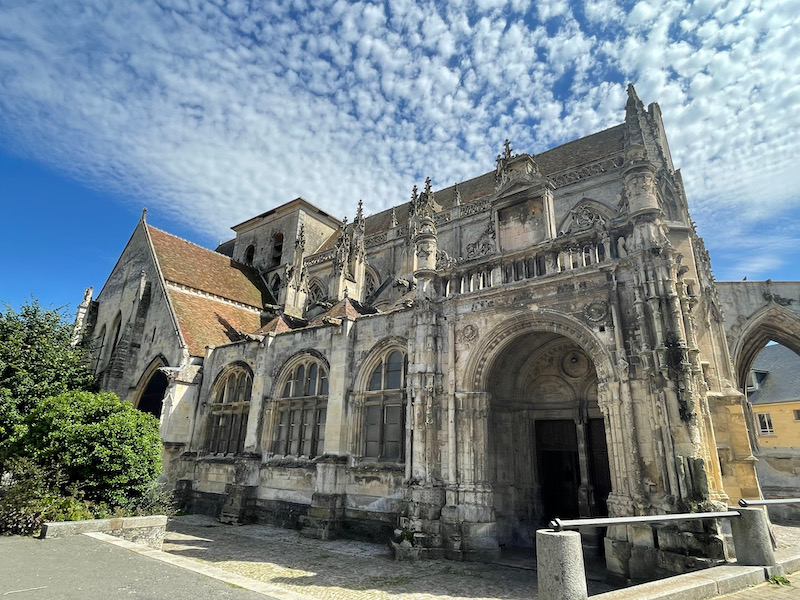
It is fairly simple inside without many paintings, sculptures, or amazing altars. It is, however, in really good shape.
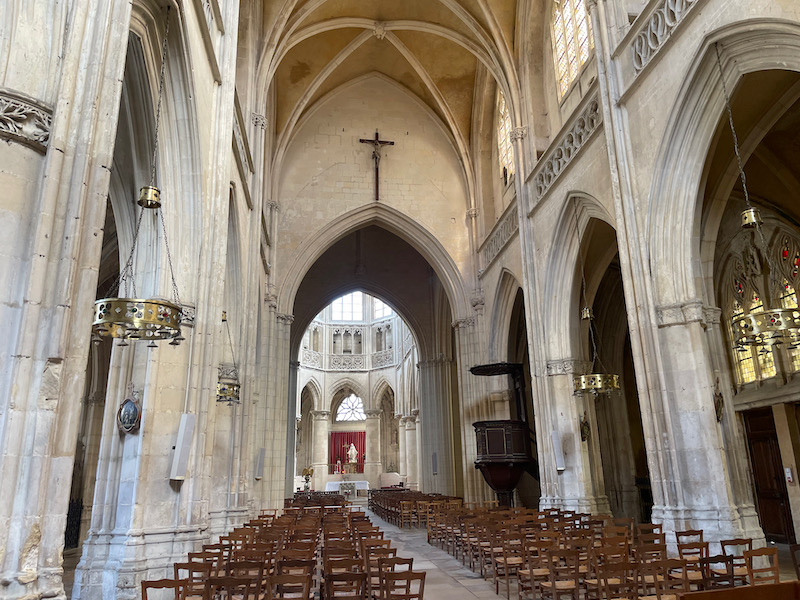
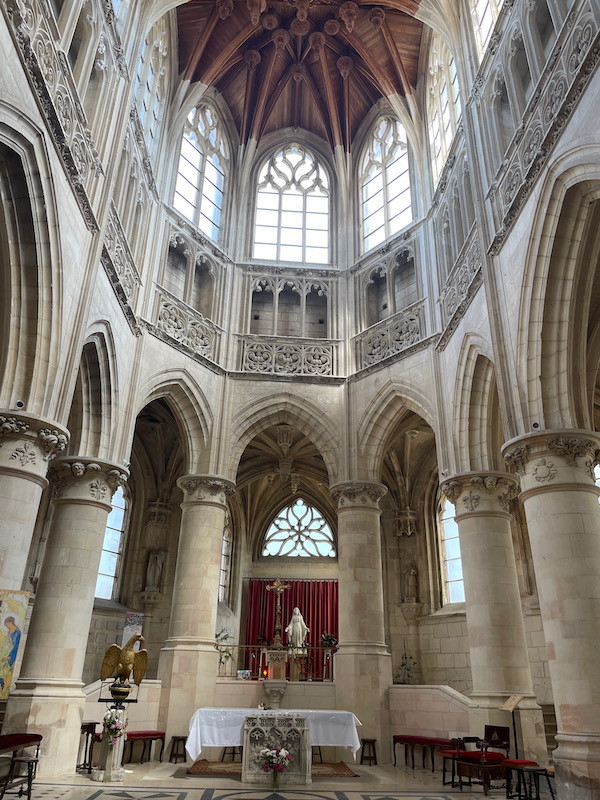
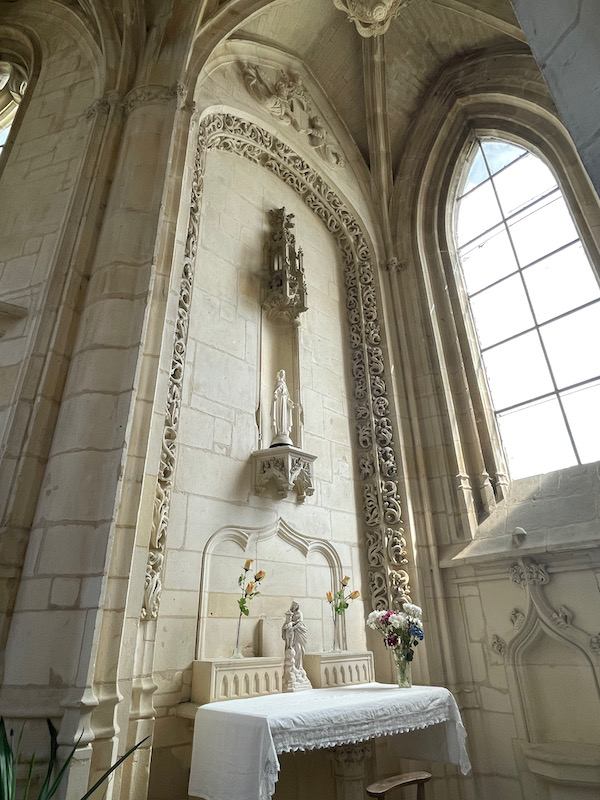
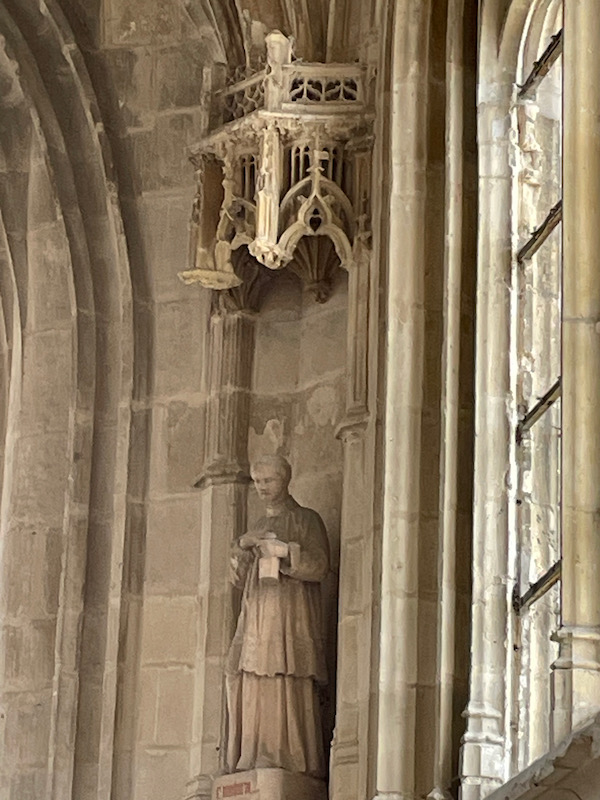
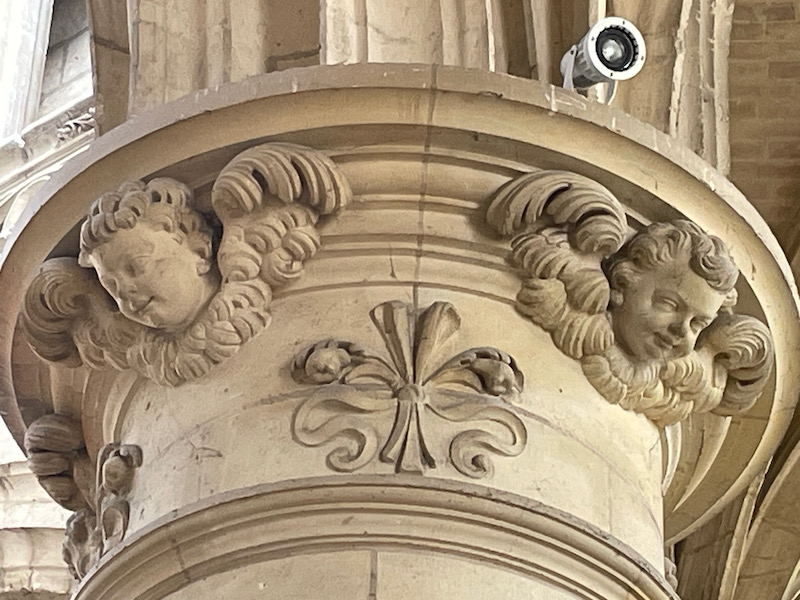
In a square below the castle, there is a statue of William the Conqueror. It was created in 1851 and then updated in 1875 withe 6 smaller statues. William is shown on horseback with a flag in his hand. The sculptor supposedly used the Bayeux tapestry to make the statue more realistic with respect to his looks and clothing. Around the base are 6 other smaller statues that represent the Dukes of Normandy prior to William the Conquerer (Rollo, William I (called "long sword"),Richard I (called "the fearless"), Richard II (called "the good"), Richard III, and Robert I (called "the magnificent"). Sorry about the pictures ... the sun was NOT my friend today!
